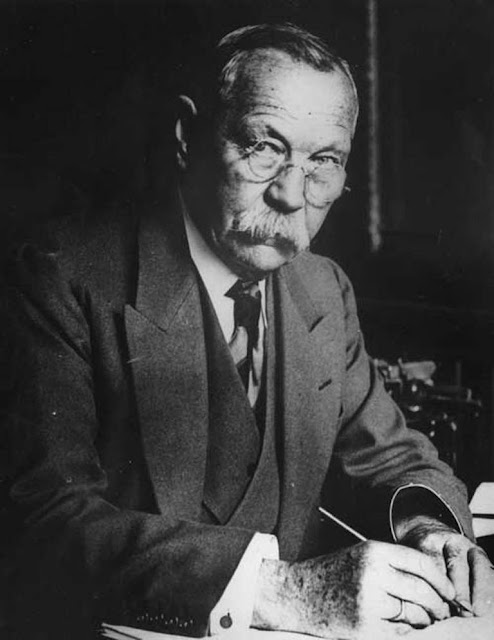Of the dealings of Edward Bellingham with William Monkhouse Lee, and of the cause of the great terror of Abercrombie Smith, it may be that no absolute and final judgment will ever be delivered. It is true that we have the full and clear narrative of Smith himself, and such corroboration as he could look for from Thomas Styles the servant, from the Reverend Plumptree Peterson, Fellow of Old’s, and from such other people as chanced to gain some passing glance at this or that incident in a singular chain of events. Yet, in the main, the story must rest upon Smith alone, and the most will think that it is more likely that one brain, however outwardly sane, has some subtle warp in its texture, some strange flaw in its workings, than that the path of nature has been overstepped in open day in so famed a centre of learning and light as the University of Oxford. Yet when we think how narrow and how devious this path of Nature is, how dimly we can trace it, for all our lamps of science, and how from the darkness which girds it round great and terrible possibilities loom ever shadowly upwards, it is a bold and confident man who will put a limit to the strange by-paths into which the human spirit may wander.
In a certain wing of what we will call Old College in Oxford there is a corner turret of an exceeding great age. The heavy arch which spans the open door has bent downwards in the centre under the weight of its years, and the grey, lichen-blotched blocks of stone are bound and knitted together with withes and strands of ivy, as though the old mother had set herself to brace them up against wind and weather. From the door a stone stair curves upward spirally, passing two landings, and terminating in a third one, its steps all shapeless and hollowed by the tread of so many generations of the seekers after knowledge. Life has flowed like water down this winding stair, and, waterlike, has left these smooth-worn grooves behind it. From the long-gowned, pedantic scholars of Plantagenet days down to the young bloods of a later age, how full and strong had been that tide of young English life. And what was left now of all those hopes, those strivings, those fiery energies, save here and there in some old-world churchyard a few scratches upon a stone, and perchance a handful of dust in a mouldering coffin? Yet here were the silent stair and the grey old wall, with bend and saltire and many another heraldic device still to be read upon its surface, like grotesque shadows thrown back from the days that had passed.
In the month of May, in the year 1884, three young men occupied the sets of rooms which opened on to the separate landings of the old stair. Each set consisted simply of a sitting-room and of a bedroom, while the two corresponding rooms upon the ground-floor were used, the one as a coal-cellar, and the other as the living-room of the servant, or scout, Thomas Styles, whose duty it was to wait upon the three men above him. To right and to left was a line of lecture-rooms and of offices, so that the dwellers in the old turret enjoyed a certain seclusion, which made the chambers popular among the more studious undergraduates. Such were the three who occupied them now ––Abercrombie Smith above, Edward Bellingham beneath him, and William Monkhouse Lee upon the lowest storey.








